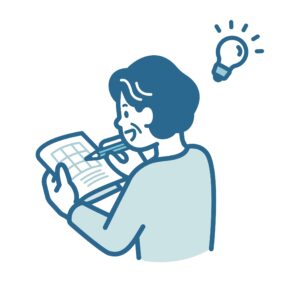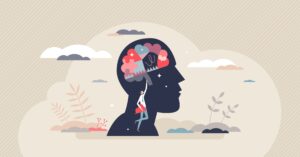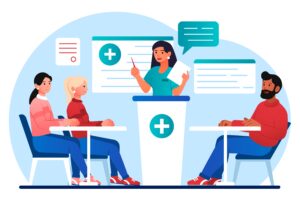
Piaget Theory: Childhood cognitive developmental stages
Piaget theory. How can I tell if my child is developing properly for his age? How do children think, and what are the stages of their cognitive development? Is it normal for my daughter to make mistakes when she talks or tries to reason? The Piaget Theory explains the different developmental stages of children. Find out if your child is developing properly for their age. We’ll help you find the answers!

Piaget theory
Piaget is one of the most well-known psychologists of our time because to his discoveries about childhood development and intelligence. Piaget dedicated his life to investigating the different stages of development and to understanding how learning and thought patterns developed throughout childhood, as well as cognitive development. This article explains the Piaget Theory and offers an explanation for the different childhood development stages.
Piaget Theory
The Piaget Theory affirms that children go through specific stages according to their intellect and ability to perceive mature relationships. These childhood stages occur in the same order in all children, across all cultures and backgrounds. However, the age at which the stage comes may vary slightly from child to child.
Piaget theory started out with two main concepts, accommodation, and assimilation.
- Accommodation is the process of taking new information in one’s environment and altering pre-existing information in order to fit in the new information. This is important because it establishes how people are going to take in new concepts, schemas, knowledge, etc.
- Assimilation, on the other hand, is how humans perceive and adapt to new information. It is when we are faced with new information but we look the old information we have stored in order to interpret the new one.
Both of these concepts Piaget said were essential and couldn’t exist without the other. To assimilate an object into an existing mental schema, one first needs to take into account or accommodate to the particularities of this object to a certain extent.
Parting from these concepts on how the world is processed, he decided to explore how do children develop cognitively.
It’s quite common for young children to have trouble empathizing as an adult might, and they will likely have egocentric thinking depending on their age and abilities, just like it’s normal for them to make mistakes.
During childhood, children will have a natural cognitive development stage where the child “learns to think”, or interact in the world in which they live. Doing this requires a series of evolutionary changes in the child’s life, marked by stages throughout all of their childhood, from the time they’re born until pre-adolescence. These stages, where certain cognitive abilities will be developed, are known to be divided according to the Piaget stages.
What is the Piaget Theory? Jean Piaget (Swiss psychologist and biologist) conducted a number of studies about childhood, dividing it into stages called Stages. Piaget Theory classifies the stages during the cognitive development of a child into different ages.
Piaget stages are a set of stages in the human development process that occurs in time. For example, the type of language that children use will depend on their age (cooing, made-up words, pseudowords, using the third person, echolalia, etc.), as well as their thinking (self-centered, in that everything happening in the world is happening in front of him or her), or physical skills (mimic, crawling, walking, running, etc.). All of this cognitive process development happens continuously and progressively in the Piaget stages, depending on the approximate age.
Will every developmental stage happen at the exact same time, according to the Piaget Theory?
No, not all children will hit the same stages at exactly the same age, but there are “sensitive periods” for all ages, where it is more probable that a child will develop certain cognitive skills. Developmentally, it is easier to learn a determined skill at a specific age, like learning the beginning of language at about age one and perfecting it at about age 7.
Cognitive development stages in children according to Piaget Theory
Piaget proposed four childhood development stages: 1- Sensorimotor Period (0-2 years), 2- Preoperational Period (2-7 years). 3- Concrete Operational Period (7-11), 4- Formal Operational Period (11 and older, until about 19 years old). We will look at these stages in depth below.
1-Piaget Theory: Sensorimotor Stage (children 0-2)
This developmental stage is characterized by how the child understands the world, bringing together sensory experience with the physical activity. This is the period where the child improves innate reflexes.
- Children at this age like bright, shiny, moving stimuli with lots of contrast.
- They construct schemes by trying to repeat an action with their own body, like making noise by hitting their toy, throwing something, or moving a blanket to get something that’s on top of it. At this age, children repeat actions randomly, experimenting with their own bodies.
- First contact with language: The first time the baby has contact with language is when it is still in the mother’s womb when it starts getting familiar with the parents’ voices. Research shows that during the baby’s first few months of life, they prefer the sound of human voices to any other sound. It’s surprising how used to the language they are since from when the baby is born, they have an exceptional ability to distinguish spoken language. Research from DeCasper and Spence show that children are especially attracted to their mother’s voice, which they can recognize better than the voice of a stranger.
- How do children age 0-2 years communicate? After a baby is born, its main form of communication is crying, as they’re still not able to produce other sounds. During the first few months of life, their communication will be primarily pre-linguistic, using smiles and crying involuntarily. These actions will later become voluntary when they learn to use them in a communicative manner. However, the parents are able to understand a cry or a smile from their baby, making it an unintentional form of communication. At about 6 months, the baby will learn to babble and make consonant-vocal sounds like “da da da”. The first appearance of words is at about 12 months.
Piaget Theory during this stage establishes six sub-stages that are:
- Simple reflexes: From birth to 6 weeks the baby will have three primary reflexes (sucking of objects in the mouth, following moving or interesting objects with the eyes, and closing of the hand when an object makes contact with the palm) As time goes by the reflexes will become voluntary actions.
- First habits and primary circular reactions: From 6 weeks to 4 months the child is now starting to be more aware and classical and operant conditioning begins in this phase. Imitation or reproduction of certain reactions with his own body begin.
- Secondary circular reactions: From 4 to 8 months the child starts to develop habits, they are more object-oriented, repeating actions with a purpose that bring pleasurable results. He can now reproduce certain reactions but with external objects.
- Coordination of secondary circular reactions: From 8-12 months the child consolidates hand-eye coordination and intentionality. His actions are now goal-oriented.
- Tertiary circular reactions, novelty, and curiosity: From 12-18 months, the infant start exploring and investigating objects that intrigue them. It’s the stage of discovery to meet new goals. Piaget called this stage the young scientist.
- Internalization of schemas: From 18-24 months the infant can now use primitive symbols to form lasting mental representations. It is when the creativity stage begins and gives passage to the preoperational stage.
Piaget Theory What can we do to promote the cognitive development of the child in the sensory-motor stage (from 0 to 2 years old)?
- Boost circular reactions: Have you noticed your baby sucking his thumb? Or the sounds it makes when it wants to sleep? That he/she shakes the rattle and repeats this action over and over again? When a baby repeats the same behavior over and over, we are faced with circular reactions. When a baby shakes his rattle over and over again, it’s because he likes the sound and wants to hear it again. At this point you can, for example, take the rattle and shake it on another surface to make a different sound. This way the baby learns that by modifying the stimulus the sound changes and this will lead to exploring.
- Let the baby play and explore different objects and toys: This way the child will explore beyond himself.
- From 1.5+ years you can play at hiding objects: Play Peek-a-boo where you show her a toy/your face/any object and then hide it and “find it again”. Repeat the procedure but let the child attempt to find it.
2- Piaget Theory- Preoperational Stage (2-7 years-old)
- This the second stage of Piaget Theory. Schooling generally starts at about 3 years-old, which brings about an important social change and causes significant social development.
- The child will start relating to other children and people, especially peers. Before this age, the interaction was generally with family.
- How do children aged 2-7 communicate? While between the ages 3-7 the child will largely expand their vocabulary, they are still guided by an “egocentric thinking”, meaning that the child will think according to their individual experiences, which makes their thinking and thoughts starts, intuitive, and lacking logic. This is why children until the age of about 6 will misunderstand events and will have trouble expressing them.
- Talking in the third person is very common in this stage because children still don’t fully understand the concept of “I” or “me” that separates them from the rest of the world.
- Children between 2-7 will be curious and want to learn, which is why they so often as “why”.
- Children of this stage often give human characteristics or feelings to objects. This is called personification.
“Egocentric” thinking, according to Piaget Theory: Why do children in this stage have such a hard time putting themselves in other people’s position? This may be related to the “Theory of the Mind”, which refers to the ability to put yourself in someone else’s mind or in “someone else’s shoes”. Children won’t be able to do this until about 4-5 years old, which is why until they reach this age, children will think that others think how they do. This theory helps explain why children don’t know how to lie or use irony until about 5 years-old.
Each of these limitations of the pre-logical stage will be overcome at about 6 or 7 years-old, in the next cognitive developmental stage, and will consolidate until about 14 or 15 years-old.
Piaget Theory What can we do to help the cognitive development of the child in the pre-operational stage (from 2 to 7 years old)?
- Adjust to your child’s cognitive development: Keep in mind your child’s development stage and adapt to their thinking.
2. Put symbolic play into practice: Through this activity, many of your children’s skills are developed and they allow them to form an inner picture of the world. Through play you can learn the roles and situations of the world around you: pretend to eat or drink, pretend to drive, pretend to be a doctor and help someone else, etc. You can practice any activity that helps your child expand his or her language, develop empathy, and strengthen his or her mental representations of the world around you.
3. Encourage exploration and experimentation: Let him discover colors and their classification, tell him how some things happen, plants or animals, convey curiosity to learn.
3- Piaget Theory: Concrete Operational Stage (7-11 years-old)
The second-to-last stage of Piaget Theory is when children start to use logic thinking, but only in concrete situations. It is at this stage that the child will be able to do more difficult and complex tasks that require logic, like math problems. However, while their ability to use logical thinking has advanced, their logic may have certain limitations during this period: the “here and now” will always be easy. Children at this age will still not use abstract thinking. In other words, they will be able to apply their knowledge to a subject that they don’t know, but it’s still difficult at this age.
Piaget considered the concrete stage a major turning point in the child’s cognitive development because it marks the beginning of logical or operational thought. The child is now mature enough to use logical thought or operations but can only apply logic to physical objects. He established a series of operations pertinent to the concrete stage.
Conservation: it is the understanding that something stays the same quantity even though its appearance changes. Watch the following video for examples on how to test conservation.
Classification: It is the ability to identify the properties of categories, to relate categories or classes to one another, and use the categorical information to solve problems. For example, group objects according to some dimension they share.
Seriation: The ability to mentally arrange items along with a quantifiable dimension, such as height or weight.
Reversibility: The ability to recognize that numbers or objects can be changed and returned to their original condition. For example, during this stage, a child understands that a favorite ball that deflates is not gone but can be filled with air again and put back into play.
Transitivity: The ability to recognize relationships among various things in a serial order. For example, when told to put away his books according to height, the child recognizes that he starts with placing the tallest one on one end of the bookshelf and the shortest one ends up at the other end.
Decentering: The ability to consider multiple aspects of a situation. For example, a child is given the chance to choose between two candies, he chooses one according to his favorite flavor regardless of the fact they were both the same size and color.
Piaget Theory What can we do to help cognitive development in the specific period (7 to 11 years)?
- Help strengthen your reversible thinking: Practicing these exercises can help you develop your logical and reasoning skills. Important for the management of numbers and mathematics, but also for the development of their adult life. For example, ask what is the result of adding two numbers together. If the result is 8, we can ask them to help us find two numbers that add up to 8. Reversible thinking can be exercised in almost any situation of everyday life. For example, when you are in the supermarket and you estimate the price of what the purchase will cost you. Or when you do it the other way around, and you estimate how much each food you are about to buy costs to get to you with the money you carry.
2. Ask him or her to help you answer questions and ask questions: For example, how would you help a lost animal find its owner? How do we keep the food from getting cold? How do we get to Grandma’s house if the car’s in the shop?
3. Help him understand the relationships between the phenomena that happen in nature or social life: Why do you think your grandfather might be sad if we don’t go to visit him, what do you think will happen if it doesn’t rain this winter?
4. Strengthens his reasoning capacity: Help him to question concrete facts.
5. Use validated Brain Games or cognitive stimulation programs for children: CogniFit is the leading program for brain enhancement in childhood. It takes advantage of the great neuroplasticity that happens in the early years of development to stimulate and enhance intellectual performance in childhood and adolescence. The brain exercises proposed by CogniFit consist of attractive therapeutic activities, rehabilitation and learning techniques aimed at helping retrain and improve the cognitive skills. With this program we will also be able to compare the child’s results with those of other children of his or her age. How to start using it? It’s very easy, you just have to register.
4- Piaget Theory: Formal Operational (11 years and older)
- This last period is characterized by the acquisition of logical reasoning under all circumstances, including abstract reasoning.
- The new aspect of this last period in relation to intelligence is, as Piaget mentions, the ability to hypothesize about something that they haven’t learned specifically.
- This is where learning starts to take place as a “whole”, rather than a concrete form like in the previous stage.
Piaget Theory What can we do to help the cognitive development of children and adolescents 11 years and older?
- Try to motivate them to ask questions: Use everyday facts and try to get them to reason about the factors that have caused a certain outcome. Help him to consider deductions or hypotheses.
2. Discuss with the child or adolescent: Try to help him/her express him/herself and explain his/her way of thinking to you when faced with different issues. Expose your way of seeing things and find the positive and negative points of each point of view. You can also address ethical issues.

Developmental theory- Piaget
Piaget Theory: Should you be worried about a delay in your child’s development?
- First, be patient. It’s true that some periods or stages are more sensitive to learning language, as well as other skills like motor skills, cognitive development, attention, reading, etc., but according to Piaget Theory, you have to keep in mind that it’s a continuous process that may take some child more time to reach, while others hit their milestones ahead of time. Sometimes children will take longer to reach a certain stage, and that’s OK.
- If, for example, when the child is starting school, the child shows noticeable delays in either communication or another area (playing, learning, trouble fitting in with other kids), you may want to think about bringing them to see a specialist (either a school counselor or pediatrician can give you some answers).
- If the child doesn’t have any type of developmental or learning problem, if they are delayed, or if they have difficulties in any specific area, it’s important to reinforce skills at home and at school. Remember that a slight delay isn’t a cause for panic, and just because a child takes longer to learn something doesn’t mean that there is any problem. Not following the timeline of Piaget Theory doesn’t mean that the child won’t later develop their cognitive skills properly with the help of support and patience.
- Remember that a 3-year-old can’t lie (that’s where the saying “kids always tell the truth” comes from), they can only talk about the small part of the world that they know. As such, you have to remember that they’re not adults and that they are learning to develop in a world where they will be more independent in the future.
Piaget Theory of Moral Development
Piaget not only studied children’s developmental stages, he also recognized that cognitive development is closely tied to moral development and was particularly interested in the way children’s thoughts about morality changed over time.
Piaget established that morality is one’s ability to distinguish between wrong and right and to be able to act on this distinction. He established that there are three stages of moral development in children.
Piaget Theory Pre-Moral Stage (0-5 years of age)
In this stage, children have little to no understanding of rules. It’s difficult for them to carry out mental operations, therefore, the behavior is regulated from outside the child, by a parent, caretaker, etc. This stage happens simultaneously with the Sensorimotor and Pre-operational stage.
Piaget Theory Heteronomous Morality Stage/ Moral Realism (5-9 years of age)
In this stage, rules are rigid and are made by adults. Rules will determine what is right and what is wrong. Children in this stage are completely obedient to authority. The rules are inflexible to these children. They also judge how wrong something might be by its immediate consequence or punishment not by intention. Adults tend to feel more comfortable during this stage since the rules are handed down to the children without discussion. This stage happens during the preoperational and concrete operational developmental stages.
Piaget Theory Autonomous Morality/Moral Relativism (10+ years of age)
Here the emphasis is more towards cooperation. Rules are changeable under certain circumstances and with mutual consent. Piaget states that children learn to critically evaluate rules and apply them based on cooperation and respect for others. Different from the previous stage, now the intention is an important concept. They judge how wrong an action might be by the intention of the person and the punishment is adjusted accordingly. They also begin to understand that the difference between right and wrong is not an absolute but instead must take into account changing variables such as context, motivation, abilities, and intentions.
As they grow, children begin to realize that when situations are handled in a manner that seems fair, reasonable, and beneficial to all, it becomes easier for people to accept and honor the decision. This concept of fairness is called reciprocity. They later switch to ideal reciprocity which refers to a type of fairness beyond simple reciprocity and includes a consideration of another person’s best interests and feelings, applying a bit of emotional intelligence.
“Do unto others as you would have them do unto you”
It’s the best description of putting yourself in another person’s shoes. According to Piaget, once ideal reciprocity has been reached moral development has been completed.
Piaget Theory, aside from explaining the different stages of development in children, also talks about the magic of children, which their egocentric thinking, their curiosity for the works, and their innocence, which can help us, as adults, reflect and understand how the child sees the world.
This article was originally written in Spanish and translated into English.
References
Hughes, M. (1975). Egocentrism in preschool children. Unpublished doctoral dissertation. Edinburgh University.
Rathus, S. A. (2011). Childhood and Adolescence: Voyages in Development. Belmont, CA: Wadsworth, Cengage Learning.
Santrock, J. W. (2004). Life-Span Development (9th Ed.). Boston, MA: McGraw-Hill College.
Sigelman, C. K., & Rider, E. A. (2012). Life-Span Human Development. Belmont, CA: Wadsworth, Cengage Learning.













